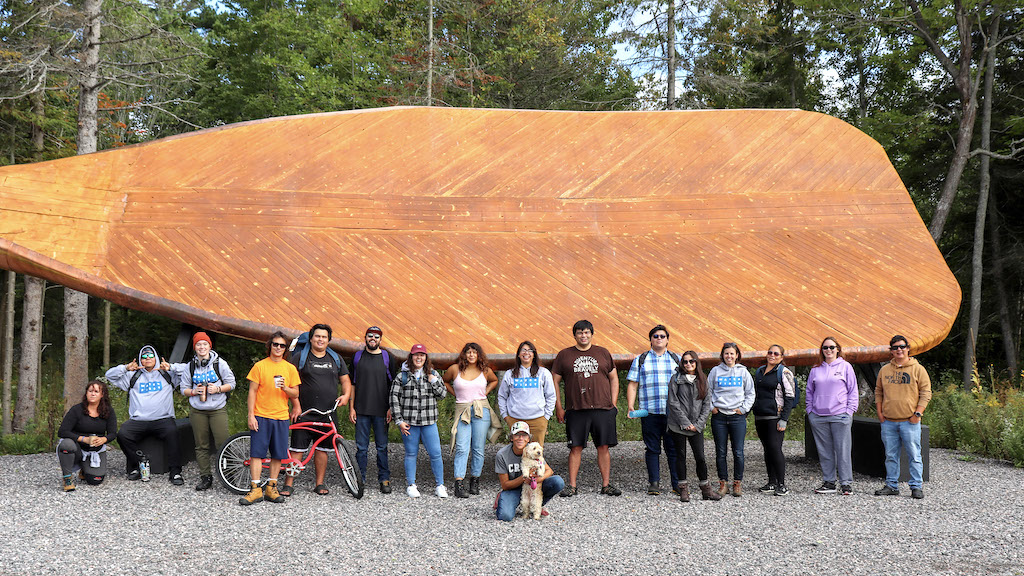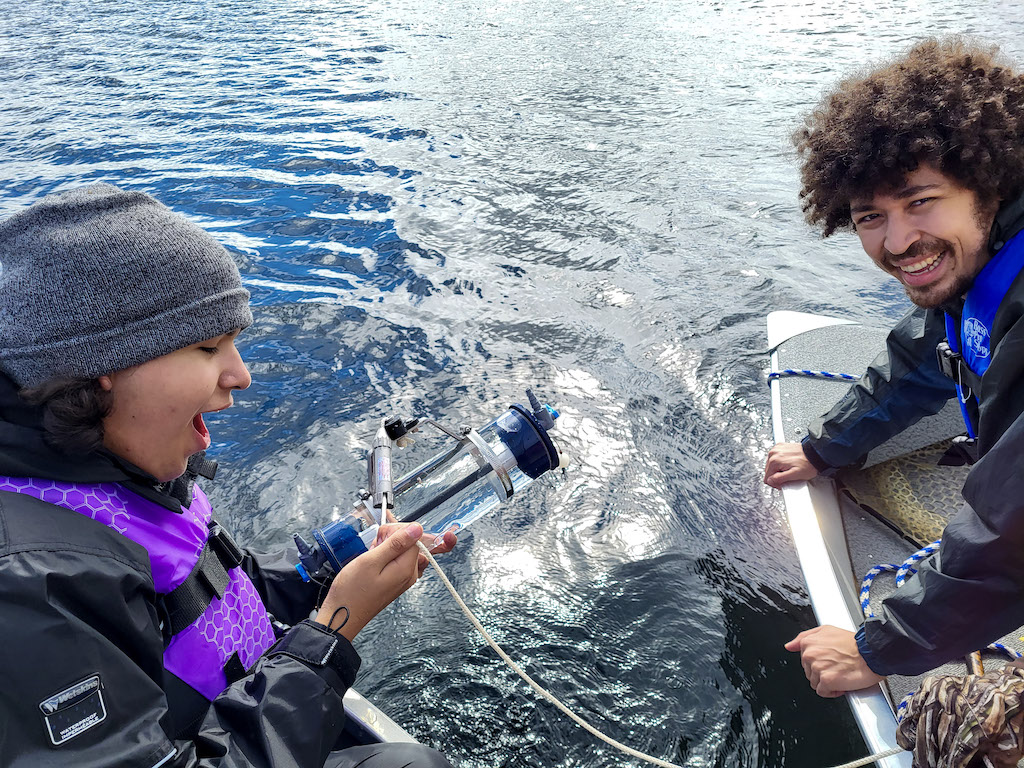There’s nothing like a glass of ice-cold water on a hot day, the smell of fresh laundry, or a hot bath to relax. This is made possible through underground and surface water sources that have been treated and tested by water treatment operators.
In 2012, Water First moved their international water resource program to Canada, and in 2016, began working exclusively with Indigenous communities, collaborating with over 70 Nations across six provinces to date. In 2017-2018 they piloted their Drinking Water Internship Program – a 15-month youth internship providing Indigenous youth with the support and training needed to obtain three provincially-recognized water treatment operator certifications.
Youth internship
Drinking Water Internship graduate and Nipissing First Nation member Laura Mallinson recounts changing her career goals to align with her passions, “Water was so important to me – to make sure I knew that what I was doing was good. Not just for me, but for my family, and my community.” Equipped with over 2000 hours of training from the internship, Mallinson was offered a position to help construct upgrades to her Nation’s level-two water treatment plant. “I had no idea how water was treated or really where it came from. I just kind of turned my tap on and it was there – and I think that’s how a lot of people see it.”

Interns and instructors in the Water First Drinking Water Internship Program in Georgian Bay stop for a photo during a week of source water quality training. | Photo: Water First
Mallinson says that the West Nipissing Ouest Water and Wastewater treatment facility is an example of one of the larger treatment plants seen in Indigenous communities, but has still faced boil-water advisories and dry reservoirs. Mallinson explains the plant is required to meet water regulations through chemical processing, multi-process filtering, and disinfection by UV and sodium hypochlorite injection. An 18-month upgrade project will expand the current reservoir to meet future developments and “to have better water quality, more of it, and better fire protection.”
Mallinson says many First Nations communities require such updates to their treatment systems, while “some [reserves] don’t have [plants] at all, they’re just on wells.” However, it’s a matter of “getting the funding to do that, and to justify the cost.”

Hands-on workshops helped Nigel and Austin, interns in the North Shore Internship, prepare to write the Entry-Level Couse, one of the certifications that participants are supported to write through the program | Photo: Krysta Wordock
“You also need operators and things like that to work there – for remote or smaller communities, it’s definitely a challenge,” says Mallinson. “There’s a ton of different regulations and standards that we’re required to meet, for [water] to be considered safe to drink…. Operators are responsible ultimately to maintain those kinds of regulations and standards in their plants.” She describes meeting interns who only have one operator running their local facility – “[The operators] haven’t been able to take a holiday for years – or if they get sick, they still have to go in.” Since its start, Water First’s internship has helped certify 45 members from 31 Indigenous communities. Water First Director Ami Gopal said in a written response to Watershed Sentinel that their current cohort of 11 interns is set to graduate in September 2023. The organization will also be starting a new internship with Ogemawahj Tribal Council in Ontario in the summer of 2023.

Laura Mallinson on graduation day with family members | Photo: Water First
Pa̱x̱a̱la, Desiree Mannila is a proud member of the Da’naxda’xw Nation, and staff reporter for the Watershed Sentinel.




